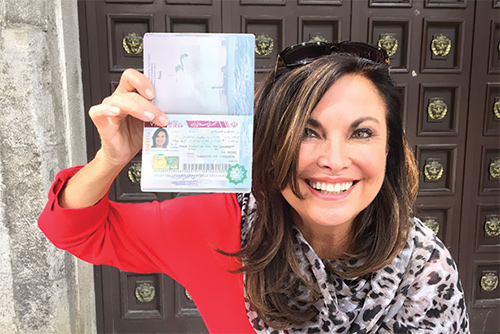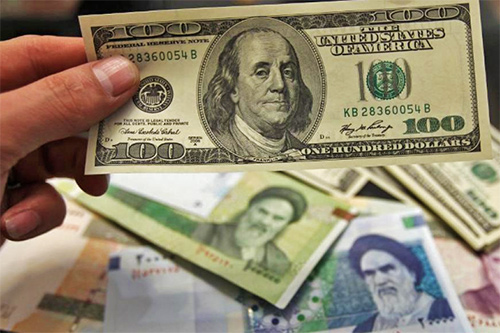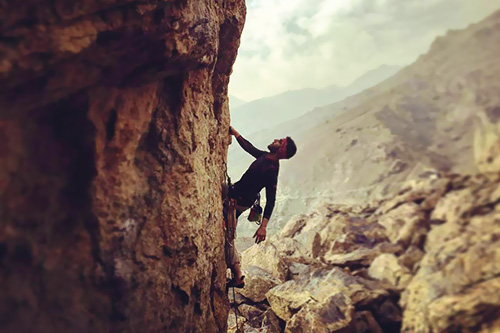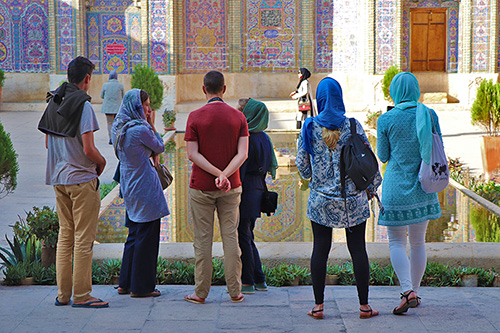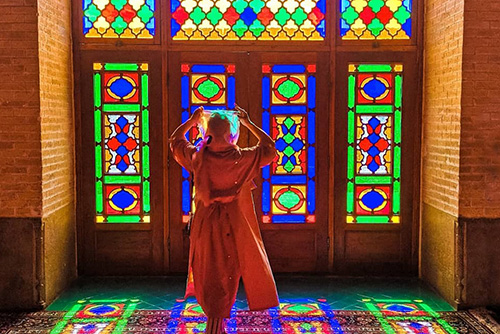 Signin with Google
Signin with Google Signin with Facebook
Signin with Facebook Before Traveling
Before Traveling12 Best Books to Know Iran Better

Persian Literature, one of the world's oldest works of literature, is an integral part of Persian Culture. It dates back to more than 2500 years ago and is generally divided into two types: Poetry and Prose Writings. Both forms are rich in style and meanings and include a wide range of topics like philosophy, love, God, life, human, etc.
Classical Persian Poetry is probably the most well-known part of Persian Literature. Great Iranian poets and scholars like Hafez, Saadi, Khayyam, Ferdowsi, Rumi and several other literary masters composed globally known Persian poetry.
The glory of the Persian language doesn't limit to its golden classical era. Modern and contemporary Iranian authors and poets have also created magnificent literary works that have engaged the attention of both national and international readers.
Here is a list of 12 interesting books by Iranian authors on poetry, novel and history that helps you know Iran better before you take a trip.
1. My Uncle Napoleon:
My Uncle Napoleon is a novel by Iraj Pezeshkzad published in Tehran in 1973 and later made into a highly popular TV series directed by Nasser Taghvai in 1976. "My Uncle Napoleon" is the story of three wealthy Iranian families living together in a large typical Iranian mansion (surrounded by a garden) under the monarchy of the oldest uncle. The story takes place at the time of the Second World War. The mentioned uncle, who is a retired low-level officer of the Persian Cossack Brigade, claims that he - as an important member of the brigade - has participated in crucial wars against the British Empire. The title "Napoleon" is sarcastically given to him by his nephews and nieces on account of his delusional claims and also his admiration for the French Emperor.
One of the nephews who falls in love with the uncle's dearest daughter narrates the love story of the book. The novel uses a language full of humour, sensuality, sarcasm and tenderness. It gives the reader a true sense of the Persian lifestyle and the struggles of Iranians around the mid-20th century (the 1940s) to become a modern country.
The book was translated into English by Dick Davis in 1996.

2. The Blind Owl:
Admired globally by several critics and authors, "The Blind Owl" by Sadegh Hedayat is considered the most important literary work of Modern Iranian literature. This novel was written in Persian and was firstly published in 1937. Hedayat, a Europe educated intellectual, is one of the Modern Persian Literature Pioneers. His works had a significant influence on the other Iranian authors as well as the formation of the Modern Persian Novel.
"The Blind Old" is a surreal and symbolic short novel reflecting on spiritual concepts like death, love, hope and despair through the story of a young man's melancholy and spiritual annihilation after losing a mysterious lover.
The book was translated into English in 1958 by D.P. Costello

3. Her Eyes:
A novel published in 1952 by another significant modernist Iranian author, scholar and activist, Bozorg Alavi, who was a close friend of Sadegh Hedayat as well. "Her Eyes" is considered Alavi's masterpiece amongst all his works.
The story revolves around two main characters. "Ostad Makan", the greatest painter of Iran (fictional) who is an influential personality and an anti-government activist. And "Farangis", an upper-class beautiful Iranian woman interested in painting but with scarce talent. The novel symbolically narrates and criticizes the social-political events and situation of Iran under the reign of King Reza Pahlavi. It is an engaging social-political romance.
The book is translated into English by John O'Kane.
4. Suvashun (A Persian Requiem):
The first novel in Persian written by Simin Daneshvar, a female fiction writer in 1969. The story happens in Shiraz, in the last years of World War II when southern Iran, including Shiraz, is occupied by the British Army and people are suffering from both colonialism and the national despotism of Iran's central government.
Zari, a traditional happily-married woman, narrates the account. Zari's husband -Yusuf- is a patriotic righteous landowner who is not willing to submit to the pressures from the foreign occupiers as well as their national supporters by rebellious acts like refusing to sell his lands' crops to them or treating peasants with a just attitude contrary to the manner of the government favoured landowners.
All these challenging deeds put Yusuf and his family into a chain of events and troubles that make Zari act out to protect her family. She takes an attitude counter to that of a traditional Persian woman.
The novel was translated into English by Roxanne Zand.

5. Symphony of the Dead:
One of the most important post-revolutionary (the Islamic Revolution, 1979) Iranian literary works by Abbas Maroufi, firstly published in 1988. This novel accounts for the story of the Mercantile Orkhani family living in the provincial city of Ardabil around the time of World War II. The book is composed of four Movements (like a musical symphony), each narrated by a different character. Djaber, is the head of the family, a traditional patriarch and the father of four children, three sons; Youssef, Urhan, Aidin and one daughter; Aida.
The novel tracks the tragic fate of each of the family members: Djaber, the tyrannical father demands everybody to live as he wishes. Youssef, the paralyzed oldest son who is a heavy burden on the family. Urhan, the second son who almost takes after his father and is eager to follow his father's successful business at any cost. Aidin, the youngest son, is a distressed gifted poet who loves to chase his dreams and study in Tehran contrary to his father's will. And Aida, who soon is separated from her siblings because of the different gender that requires her to follow her mother and be bound to traditional responsibilities like the house chores.
The creative characterization and variety of narrations in addition to detailed visual descriptions of locations, like the Nut-Sellers Souk or the Lord's Electric Fan Factory are the major features making this novel a unique read.
This book is translated into English by Lotfali Khonji.
6. Funny in Farsi:
There are several memoirs of Iranians growing up in America, yet Funny in Farsi by Firoozeh Dumas is definitely one of the most hilarious ones! Firoozeh moved to the USA (where her father got his engineering degree before they immigrate as a family) with her family when she was seven years old in 1973. Throughout the book, the writer humorously talks about their struggles to settle down in the new country, to adjust to the unfamiliar American culture, to preserve their Iranian identity and in general all the difficulties and pleasures of being an Iranian in the USA. The simple, fun and realistic narration of the novel makes it interesting and highly engaging.
The novel is written in English and was firstly published in 2003.

7. A History of Modern Iran:
It is almost impossible to learn about the history of the ancient land of Iran by reading just one book. Hundreds of books have been written about Persia's history until today, each providing useful information about the country's chronicle and historical background.
However, what makes "A History of Modern Iran" by Ervand Abrahamian stand out among all these publications are features like the fair and impartial narration of events, the fathomable language of the book for different readers and the comprehensive discussion of all the important incidents of Iran's modern history, including the discovery of oil, the imperial interventions, the reign of Pahlavi dynasty, the 1979 revolution, the Iran-Iraq war. Most importantly, throughout the book, the reader can see that the people of Iran are at the centre of the writer's concern and this book is wholeheartedly dedicated to them and their story.
Ervand Abrahamian is an Armenian-Iranian historian, an Oxford University alumni who has taught at several universities such as Oxford, Columbia, New York, and Princeton. He published "A Modern History of Iran" in 2008.
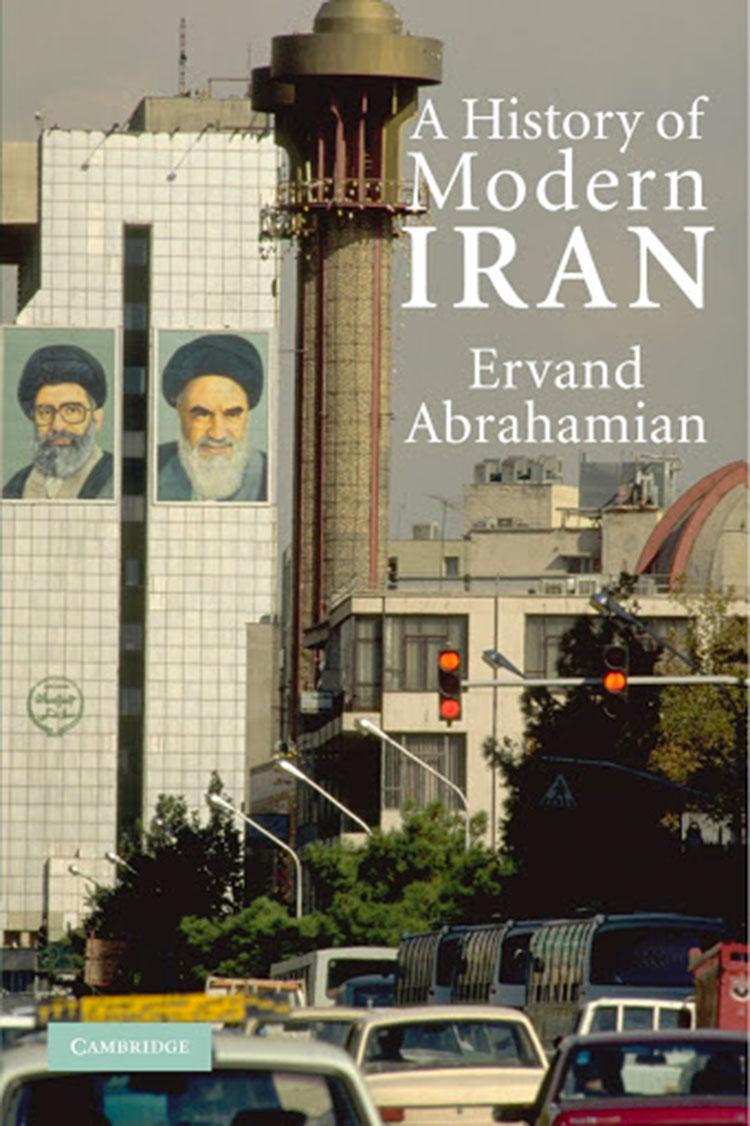
8. The Persian Book of Kings (Shahnameh):
Written by Abul-Qasem Ferdowsi around 1000 years ago. This book is often regarded as the Persian Odyssey and is one of the world's longest epic poems. Shahnameh is of high importance in Persian literature due to many reasons, initially, the significant role it had in saving the Persian language. Shahnameh was composed in the time of the Arab invasion when Iran was in danger of losing its historical and cultural heritage, including its language.
Secondly, because it is a poetic narration of the pre-history and history of Iran and its kings. However, the account of this book and most of its characters and events are mythical. It provides accurate information about the pre-Islamic Iranians and their culture, traditions, religion and lifestyle.
Shahnameh has three parts: The Mythical Age, The Heroic Age and The Historical age. It starts from the story of the world's creation as believed by ancient Iranians and continues to narrate the fall of the last Persian Empire and the Arab invasion. It is full of interesting love stories, tragedies and heroic tales.
The first English translation of Shanameh published in 1832, yet one of the most popular translations is by Dick Davis.

9. Rumi Essentials:
A collection of poetry by the 13th-century Persian poet, Sufi mystic, theologian and Islamic Scholar named Jalāl ad-Dīn Muhammad Rūmī or simply "Rumi". He is one of the various poets who contributed to composing the precious literary heritage of the Persian language. Rumi is famous for being one of the greatest spiritual masters and intellectual poets of the Islamic world due to his deep and novel vision toward spiritual concepts like God, religion, life and love. (which is beautifully presented in his poems.)
He has written several poetry Divans and thousands of Persian couplets. Many translated to English. One of the best collections of his works available in English is "The Essential Rumi" translated by Coleman Barks.

10. Another Birth: Let us Believe at the Beginning of the Cold Season
It is a modern poetry collection by Forough Farrokhzad, one of the most avant-garde female poets and filmmakers of Iran in the 20th century. Forough was born in 1935 in Tehran. She is famous for her controversial poetry and her powerful feminine voice that was much ahead of her time.
Her writings and poetries are mostly about women issues, desires, feelings, sorrows and aspirations. She discusses and talks about some women-related subjects that were considered taboo in her time. She is the strong voice of the modern Iranian woman. Though she did not live long and passed away in an accident at a young age (32 years old), she left precious literary works and documentaries. The mentioned collection is one of her most popular poetries translated to English by Ismail Salami.
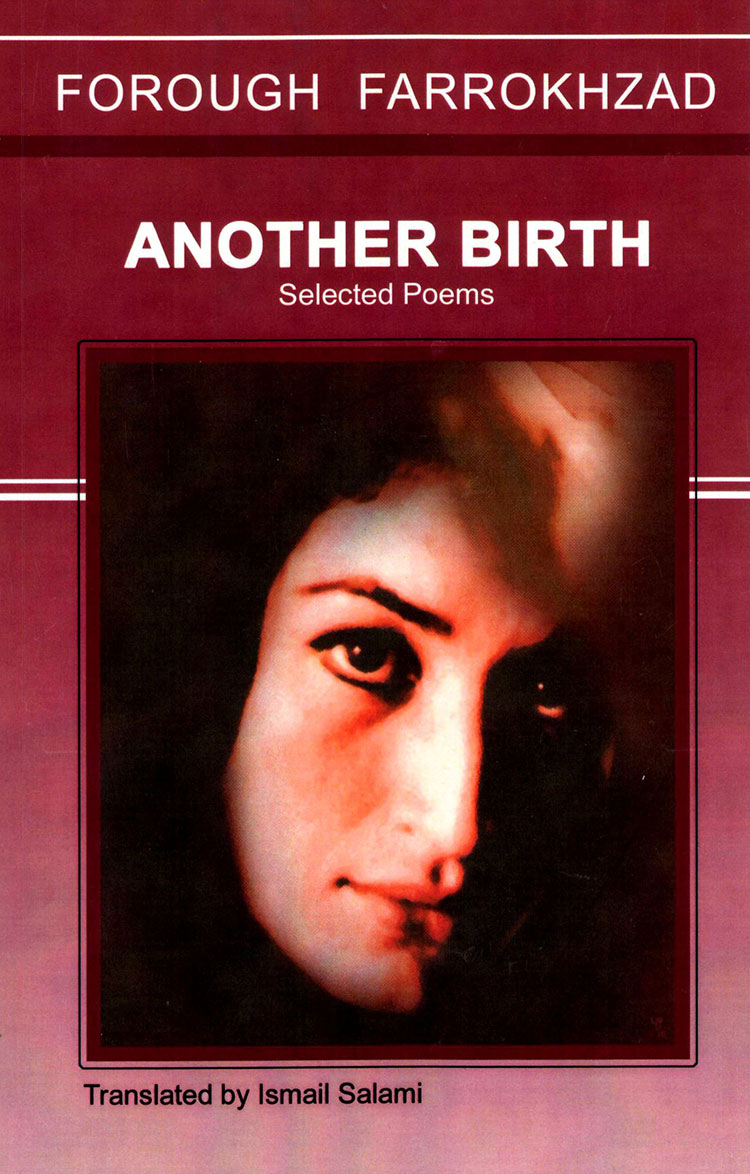
11. A Selection of Poems from the Eight Books:
This poetry collection is by one of the most influential contemporary Persian poets, named Sohrab Sepehri. Sohrab born in 1928, in Kashan, Iran. He was also a worldly known modernist painter and a graduate of fine arts.
Sohrab was famous for being a gentle and peaceful introvert interested in Buddhism, mysticism, travelling and nature, having these traits caused him to be accused of being indifferent to the world around him.
In a time (around the 1979 revolution) when Iran was going under massive political changes and many poets were engaged in revolutionary activities, Sohrab preferred to focus on poetry, painting and taking refuge in nature.
Despite all the contradictory opinions about him, almost everybody agrees on the fact that he was a talented poet and an ingenious artist. He significantly influenced modern Persian poetry and art through his works. His poetry is a nice mixture of Eastern notions and Western techniques inspired by his Asian roots and his numerous travels to different lands in search of the meaning of life. After dedicating his life to poetry and art, he finally passed away from leukaemia at the age of 51.
The mentioned poetry collection is translated into English by Bahiyeh Afnan Shahid.
12. New Food of Life: Ancient Persian & Modern Iranian Cooking & Ceremonies:
It may not be a literary work, but definitely an essential book for anyone interested in learning about Iranian culture. In this cookbook, the author Najmieh Batmanglij provides 240 classic and regional delicious Iranian recipes with hundreds of full-colour mouth-watering photos. She excellently discusses the tales, customs, anecdotes and ceremonies related to each recipe that make it much more than a simple cookbook.
The book was firstly published in 2011 in English.

By Nazanin Moayed / TasteIran
